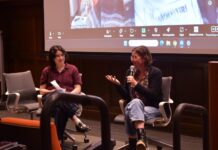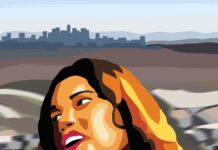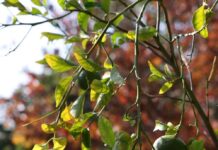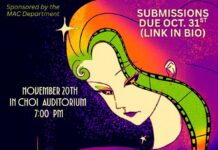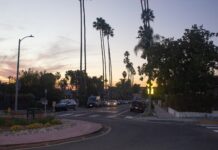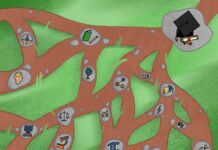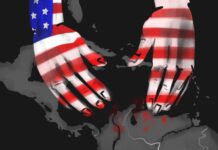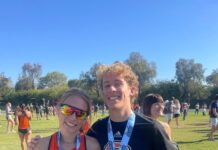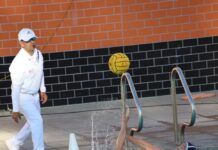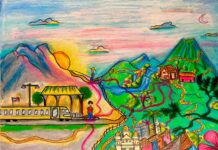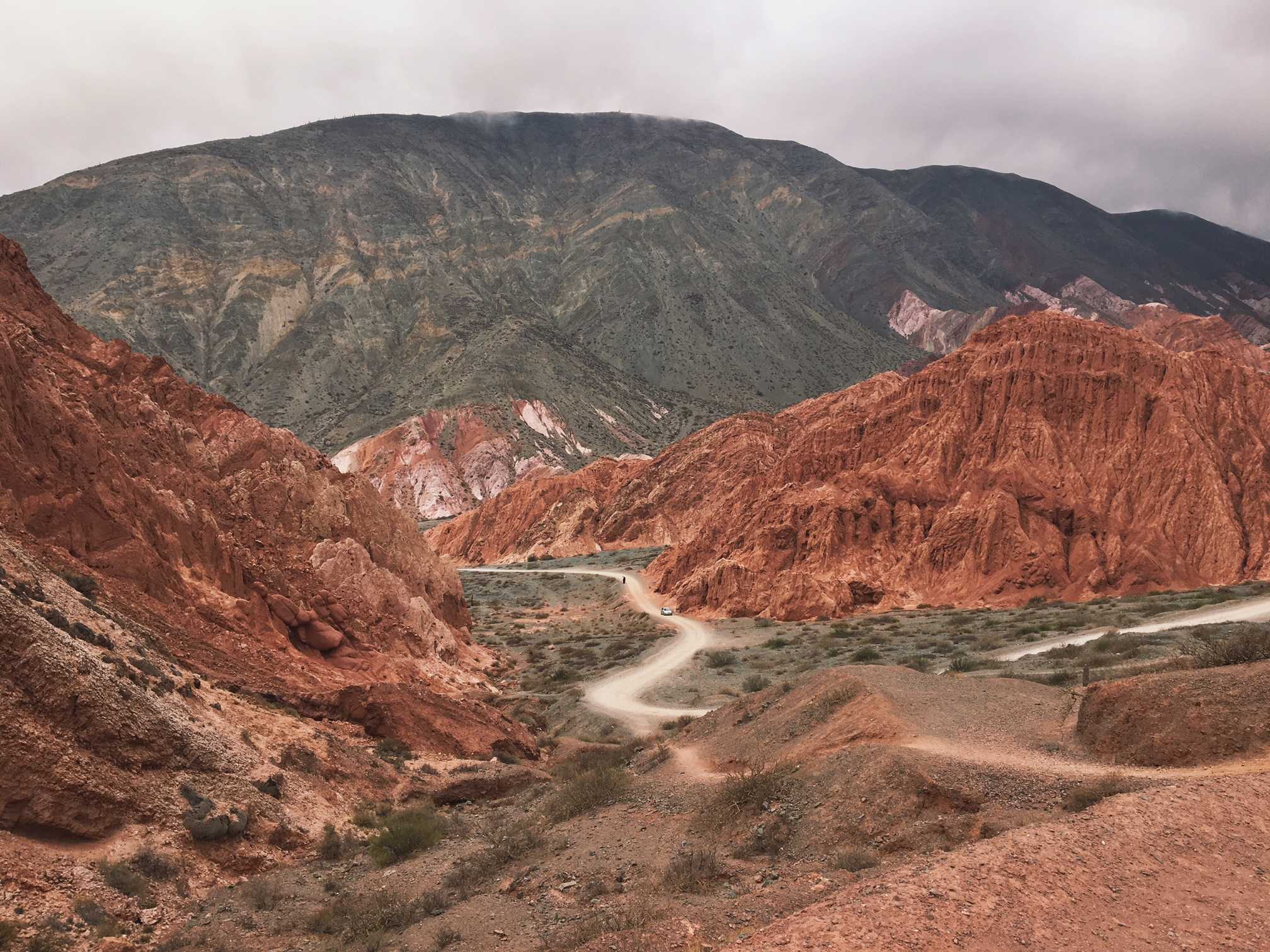It was like I imagined the rolling green hills of the English countryside, just after dawn. Skies cold patchy blue behind a marine layer, rising sun back-lighting the clouds. Our geology mobile, a retro-looking white and blue touring bus from the 90’s, cruised the Catlin coast’s blustery cliffs on the Southern Scenic Route, the region’s only road. To our left, the sheep sprawled out in the fields, bumbling in a frigid morning breeze. Waves of green hills flowed right to the oceanside cliffs like a frozen terrestrial ocean, competing with the tumultuous south Pacific that crashed blue below us.
Our mission: to scour the Catlin beaches for ancient fossilized shells before the tide blocked our way. Our first stop was at the Wangaloa formation, an area of 66-million year old rocks and fossils from the Cretaceous and early Paleocene.
The animals fossilized in the Wangaloa formation are from a fascinating blip of time on the geologic timeline. They came into existence right after perhaps the biggest, and definitely most famous, extinction event known to man: the Cretaceous-Paleogene extinction event.
We still don’t know exactly what triggered it, but the most popular theory goes like this:
Sixty six million years ago, as the Cretaceous period transitioned into the Paleogene, massive asteroid hit the earth’s surface, and three quarters of all animal and plant species went extinct in a geologic blink of an eye, including all non-avian dinosaurs. The event is marked in the rock record by a thin sediment layer (sediment deposited during the extinction event) known as the K-Pg boundary. The layer contains high levels of iridium, a metal that is rarely found in earth’s crust, but is common in asteroids. That clue, coupled with the discovery of a 66 million year old, 112-mile wide crater in the Gulf of Mexico that looked suspiciously asteroid-derived, bolstered the theory that the extinction event was related to an asteroid’s impact.
A really big impact could have triggered a “long winter” climatic event, quelling plant photosynthesis for enough time to warrant mass extinction. The fact that animals that relied directly on photosynthesis went extinct in the event, while animals that consumed detritus were more likely to survive, supports the photosynthesis-block theory.
But in the wake of all the destruction lay evolutionary opportunity: ecologic niches were waiting to be filled. In a short period at the beginning of the Paleogene period (Paleocene epoch), mammals radiated out from a small, simple family into the diverse and extensive group of animals we’re familiar with today, producing groups like horses, primates, and whales.
In field work for my geology class, “Evolution of New Zealand Biota”, we focus on ancient marine invertebrates like snails, clams, oysters and squids, since their shells generally well preserved in the fossil record. Most of these species went extinct during the Cretaceous-Paleocene transition, but then re-emerged and radiated with new species during the Paleocene.
Our retro geo-mobile slowed down and pulled to a stop at the edge of a cliff, overlooking the crashing surf like a lighthouse. Sleeping geo students woke up from naps, rubbed groggy eyes and piled out onto the Wangaloa formation.
The Wangaloa formation encompassed the cliffs and boulders on the beach. It’s made up of fossiliferous sands and conglomerate rock, and sits on top of coal deposits from burned, petrified wood. The animals fossilized in its rocks almost all come from directly after the Cretaceous-Paleogene transition. In fact, geologists created a new geologic time unit specific to New Zealand called the “Wangaloan” because of the unit’s distinctive fauna.
Strangely, the Wangaloan formation includes marine invertebrates from the Cretaceous period that seem to have “survived” the extinction event, so for a long time geologists weren’t sure if the rock was from the Cretaceous or Paleogene.
On that cold, blustery Sunday morning, we geology students got to get on our hands and knees and scour the cliffs and beach rocks for indicative fossils. We scrambled down the cliff on a thin muddy trail, juggling rock hammers, hand lenses, hard hats and field notebooks, and strode along the beach to a brilliant orange sandy limestone cliff.
The cliff was imaginatively carved by the sea into a vertical sculpture of curves and contours, pockets and divets, decorated by swirls and stripes in a rainbow of yellows and oranges. Orange color like paint ran down the the wall into eyelets of pale yellow and deep red mouth-like ledges. Embedded in the wall like ornaments were fossilized shells: Conchothyra (ancient swirly-shelled snails) and Lahillia (ancient clams) from the Cretaceous, and Purpurocardia (ancient clams) and Turritella (unicorn horn-shelled snails) from the Paleocene.
Lahillia, bivalve clams from the Cretaceous, decorated the rock like confetti. Aside from New Zealand, lahillia are found in Argentina, Chile, Australia and Antarctica– all southern continents. How is that possible? Did they all evolve separately into the same species? More likely, they all lived together at one point long ago. Lahillia is one example of a species that existed when the continents were connected– on the supercontinent Gondwana.
You may have heard of Pangaea, the supercontinent that existed about 510-180 million years ago when all of the earth’s continents were concentrated into one landmass. But then Pangaea split into Laurasia and Gondwana, northern and southern (respectively) supercontinents. Gondwana encompassed most of today’s southern hemisphere, including Antarctica, Africa, Madagascar, Australia, and South America, while Laurasia encompassed Europe, Asia and North America.
It also included the Arabian peninsula and the Indian subcontinent, because they used to be in the south. During the Paleocene, India started drifting north and eventually slammed into the Asian continent (formerly Laurasia) creating the Himalayas in the process. In the next few million years the Atlantic ocean grew larger, pushing Africa towards Europe to make the Mediterranean, and South America crept up towards North America.
The fossils from the Paleocene (Purpurocardia, Zeacolpus) probably came into being after Gondwana started breaking up. Thus, our pretty Wangaloan fossils are relics of both the K-Pg extinction event and the demise of Gondwana.
Our next stop was at Roaring Bay, with fossils from the Jurassic and Triassic. As we drove, the sky opened out to let out a brilliant, nearly turquoise blue, and green Catlin cliffs lit up in tropical greens. We wound down the lush cliffside to an inlet surrounded known for congregations of penguins. (They come out at night, though, so we didn’t see any).
At the water line, orange and crimson seaweed decorated the rocks like streamers and seals hid in caves. Roaring Bay is riddled with fossils: Jurassic plants, worms, snails, and even ichthyosaurs, large marine reptiles that also went extinct at the K-Pg extinction event.
We were free to scramble to our hearts desire on this stop, and were let loose to sniff out the ichthyosaur bone. Nobody could find it, so the professor had to point it out. On the last stretch, the tide had risen to lap up on the cliffs, and scrambling became mandatory as we rushed to beat a quickly rising tide, clinging to sculpted conglomerate pillars. Only on a geology trip. The sea demanded an end to our expedition, so we headed back toward the bus to head home.
The same content is published on my personal blog, A bird’s eye view.
![]()


